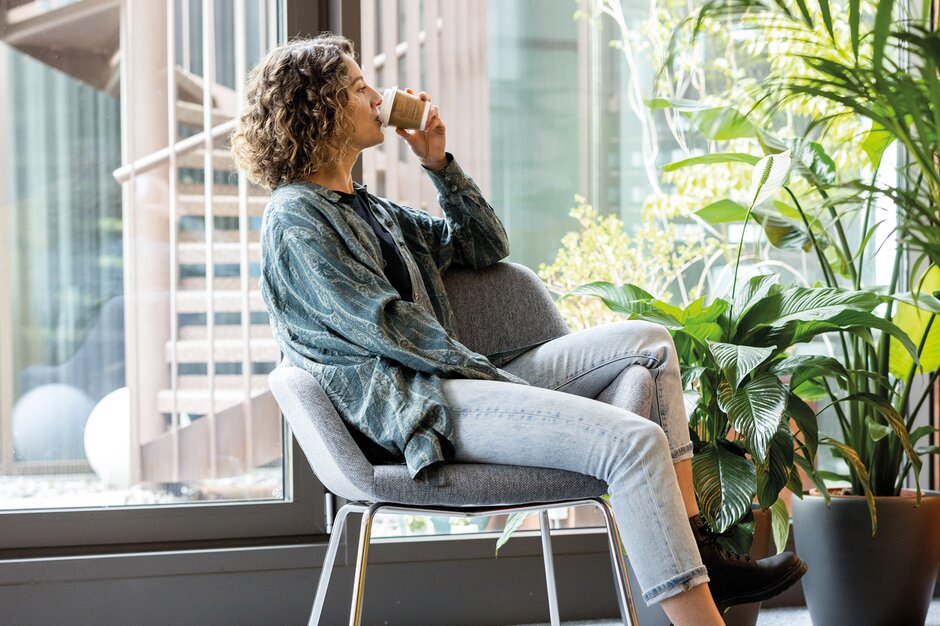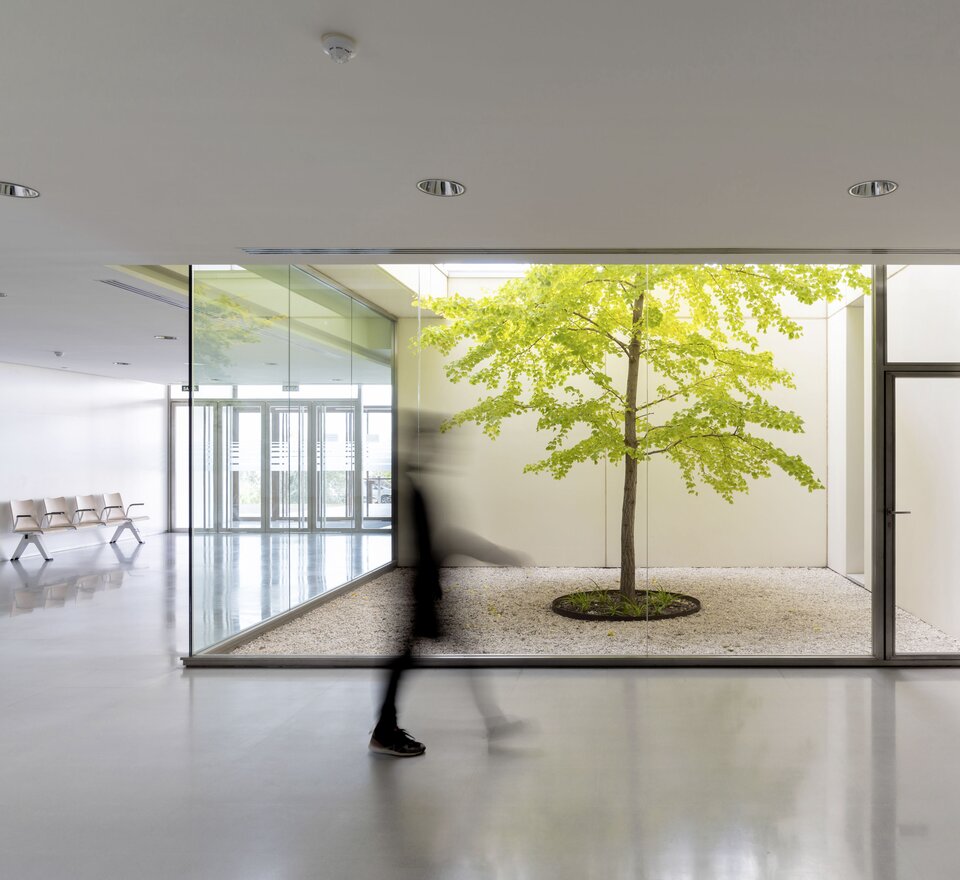The office of the future will be built on the foundations of light and nature – biophilic lighting design is becoming a key driver of productivity, health and well-being, and visual style. But what effect does light have on people, exactly?
Workspaces are in a state of constant change. Where fluorescent tubes once flickered, workspaces flooded with natural light are becoming increasingly popular. We’re beginning to see nature as an ally. Biophilic design is a concept that transforms workspaces into living spaces. It creates environments that stimulate the body and mind, lower stress, and create harmony between people and the spaces they work in. At the heart of this approach is something very simple. Light. We already know that it has a big impact on our well-being and our body clocks. “Concentrated solo working, workshops, online meetings, relaxed discussions are all going on in the same place. But how does that work when the lighting is always the same? The answer is simple. Light has to be adaptable – based on the day, the context, the activity involved, and the users of the space”, explains Andreas Henrich, Head of Application and Product Management Office at Trilux, in an interview with the industry magazine Licht. Combining natural light with artificial options that imitate it has a positive impact on people’s sense of well-being in indoor spaces.
Since the discovery of retinal ganglion cells – nerve cells that take visual information from the retina to the brain – more than 25 years ago, science has shown that light has a deep impact on the human body. Far more than just helping our vision, it also regulates the release of hormones such as serotonin and melatonin. Human-centric lighting (HCL) helps us maintain a healthy sleep-wake rhythm over each 24-hour period. It mimics the ebbs and flows of natural light to help regulate the body’s internal clock. Cool light in the morning and throughout the day helps us feel energised and concentrated. In the evening, warm white shades help us relax. According to the Human Spaces Report, a near-natural working environment with exposure to daylight boosts creativity by 15 percent and productivity by up to six percent.
New Work in a new light: the office of the future is a lively space. One that unites technology and nature, functionality and emotion, work and life. Biophilic lighting design is the element that brings rooms to life, supports our biological rhythms and creates an atmosphere of balance. Bright and inviting offices keep us healthier – and are incredibly photogenic, too. We like.
Human-centric lighting (HCL)
is based on scientific evidence that light not only impacts our bodies in terms of our vision, but also on a deep biological and emotional level.

What employees want:
- 44% workstations with natural light
- 19% a quiet working environment
- 20% nature and plants
Source: Human Spaces Report

